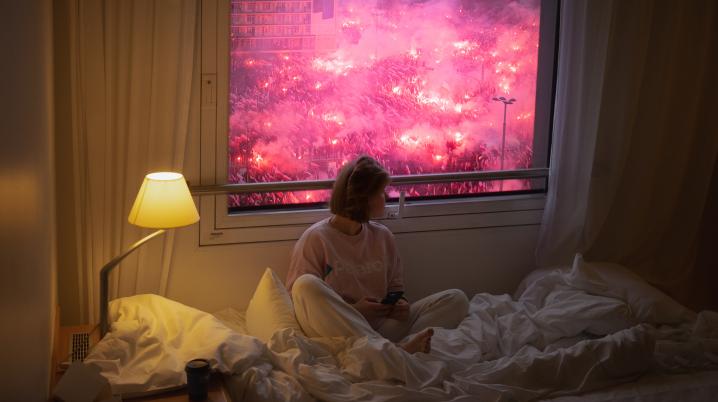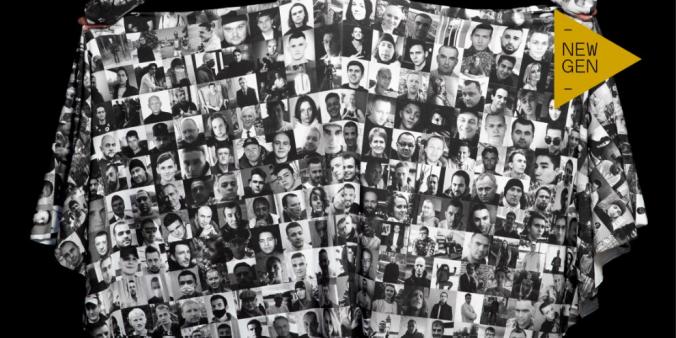
The return of the Polish right-wing party Law and Justine (Prawo i Sprawiedliwość; PiS) to administrative power in 2015 has meant an influx of religious and nationalist influence over the cultural sector. In Cultural Control: Censorship and Suppression of the Arts in Poland, the Artistic Freedom Initiative (AFI) reports on the various mechanisms in place that foster such interferences. In detailing changes in the legal, bureaucratic, and media sphere with the lived experiences of creators and artists, AFI presents a comprehensive overview of the state of the arts in Poland.
The PiS’ party’s political leanings spill over into its policies as we see how its ministers and leaders seek to reorient artistic and cultural productions towards the glorification of the Polish nation, the heroism of ethnic Poles, Catholic primacy, and the patriarchal family unit. The country’s cultural outlets have therefore also been pushed to abide by this narrative as the government pressures cultural programming.
On the local level, however, the image is often different from the main narrative of the government. The cultural sector continues to be largely led by independent opinion-forming institutions and festivals. Most medium and small-sized cultural institutions and festivals in Poland are co-funded by local governments, which still seek critical artistic thinking and international collaboration. While the big picture is concerning, the Polish cultural sector continues to be an intriguing place for artistic work. One can learn from the complexity of the political and social tendencies, the rich history of the country’s cultural heritage and its vivid contemporary art scene.
Four major trends
Four major trends identified by the AFI are (1) the investigation and prosecution of artists producing anti-nationalist or anti-Catholic works of art; (2) the bureaucratic overhaul of state and local arts institutions through the installation of right-wing leaders; (3) the deployment of state media to advance conservative cultural narratives and to denigrate leftist or non-conforming art; and (4) the emboldening of non-state actors—such as right-wing organisations and ultra-orthodox religious groups—which are actively intimidating dissident artists.
While the Polish government is still subject to constitutional, regional, and international rules and regulations, PiS is limiting minority perspectives from entering the public discourse. Deployment of Poland’s blasphemy law has seen a rise in arrest numbers for those offending the ‘religious feelings’ of others. These legal mechanisms, in turn, give legitimacy to the bureaucratic interventions put in motion by the Ministry of Culture. Led by Piotr Gliński, the ministry has seen to the reappointment of cultural institution directors without considering expert panel recommendations (which is required by law). A lack of merit-based hiring practices—particularly at art museums and theatres—hails a significant change to the prior custom of holding open competitions for such positions.
Where institutions go, the media and the public tend to follow. This is evident from the gradual nationalisation of media, with independent media less and less able to support artists whose work deviates from PiS-approved nationalist cultural narratives. It seems that even mild critique of Catholicism, nationalism, racism, sexism or LGBTQ+ discrimination is deemed an affront to the Church and therefore the Polish nation. A consequence of the abovementioned development means that there is more room for non-state actors to step into the gaps where the party cannot act. NGOs, legal service providers, religious groups, youth organisations, and private individuals are given executive freedom to act if their political affiliation is in-line with PiS. This has led to a heightened risk of victimisation for art and culture workers that identify as sexual minorities or gender non-conforming groups and the institutions that support these individuals.
Looking forward
In AFI’s policy recommendation on the matter, the enactment of legislative and policy changes to ensure independent management of national and regional arts and cultural institutions is highlighted. While the PiS administration’s interventions present obstacles to creative expression and plurality in the arts, the Polish art scene remains spirited, socially engaged and exceptionally vibrant.
Poland became a focal country in the 2021-2024 international policy of the Netherlands. The new policy aims to foster collaboration with the Polish cultural sector. Opportunities exist in particular for the following sectors: performing arts, film, literature, classical music, dance music, heritage, and creative industries (sustainable cities) among others.
Information & Advice
Are you interested in opportunities for cultural exchange with Poland? Feel free to contact our advisor Tijana Stepanovic with your questions. She can inform you about the latest developments in the country, relevant contacts, and cultural venues. You can also read our country page Poland for more information.





